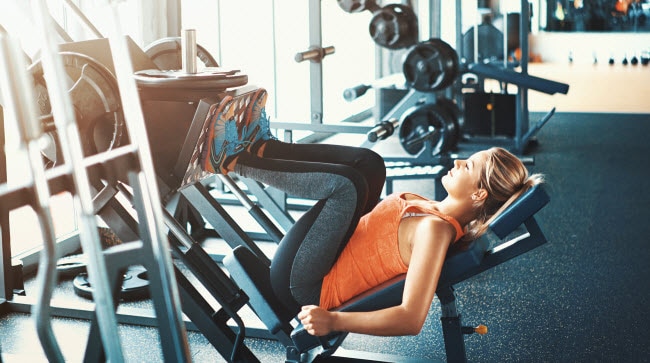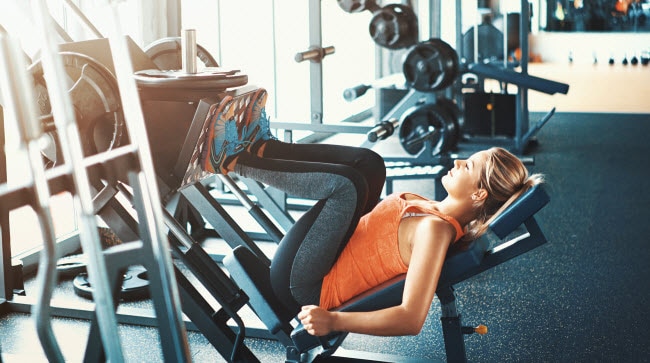The gym can be an intimidating place, especially if you’re new to the equipment. It can feel impossible to understand and use these strange contraptions—and they can easily be used incorrectly, which can lead to injuries. Instead of hurting yourself, or worse, ignoring these valuable tools altogether, use these tips to get to know the equipment that’s new to you.

1. Get your free training session
Your free training session, also referred to as your “new member orientation,” is a great way to learn how to use new gym equipment. The trainer will walk you through the space, explaining what you’re seeing and how to use everything. The best part is, during this session, you’ll likely also get a fitness assessment, allowing the trainer to show you the machines that matter most to your body, needs and goals.
Remember to ask about small items too, not just the large machines. If you don’t know how to use resistance bands or kettlebells, both great fitness tools, ask about those too. That’s what this session is for, so take advantage while you have someone by your side.
If you already have a gym membership, but never took your complimentary session, most gyms will still let you take it. All you have to do is ask and get it scheduled.
2. YouTube it in the gym
With your headphones on, no one knows what you’re listening to—or in this case, watching. If you want to try a new piece of equipment, just search for a YouTube video. Look for someone who’s explaining both the movement itself and the proper form, so you can start with a solid foundation before adding weight.
If you want to get an overview of multiple pieces of equipment at home, before you head to the gym, check out these videos:
- How to Use Basic Gym Machines - Complete Beginners Introduction
- How to Use Machines at the Gym Effectively
3. Start low
If you’ve never used a piece of equipment before, it’s important that you start at a low weight. This is when you’re most likely to get hurt because you’re not familiar with the movement yet—nor are your muscles. In some cases, if you’re new to strength training as a whole, it may even be wise to start with no weight as you master the movement itself.
If you’re not sure that you’re doing it right, ask a trainer to quickly critique your form—they’re often walking around the gym and can help if they’re not with another client. Only when your form is correct should you add more weight.
4. Find a class
There are many classes that introduce you to equipment that you’ve never used before, depending on the gym you belong to. Most large chains offer a wide range of classes, allowing you to pick an choose based on what want to learn. As you’re deciding what classes to take, look for the ones that help you learn new equipment, including:
- Spin (cycling)
- TRX class
- Weight training class
- BodyPump
5. Look for an Orangetheory gym
This specialized, nationwide gym chain is great for someone who’s new to most equipment. As a member, you attend their classes, and every class participant has their own “cubby,” your personal area where you do the workout. The class is split between strength training and cardio, and both give you the opportunity to learn and use new equipment.
In a traditional class, the cardio portion has you moving back and forth between the row machine and treadmill. If you’re new to the rowing machine, this is a great chance to learn it.
During the strength training session, you’ll find weights, a bench, and TRX cables, among other items, in your workout area. If you’ve never used these items, you can get instructions from the teacher before starting. You can then refer to the video that plays throughout the gym during the workout itself to make sure you’re doing it right from start to finish.
Learn, don’t ignore, that gym equipment
Use these tips to feel more confident with the gym equipment that’s unfamiliar to you. Work with a trainer, learn with YouTube videos, or find specialized classes and gyms so you can learn the movement and proper form. Don’t forget to start with low weight and add only when you know your form is correct—if you move too fast you risk injury, which can keep you out of the gym altogether. Slowly but surely you’ll be able to expand your workouts to include these awesome new tools.




